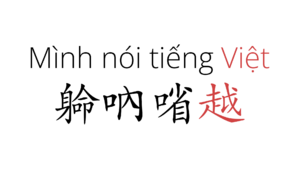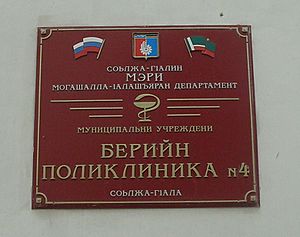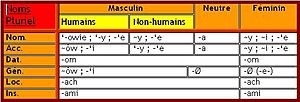Morphological typology facts for kids
Morphological typology is a way to sort and understand the world's languages based on how they build words. Think of it like sorting LEGOs by how they connect! This field looks at how languages combine small meaning-units called morphemes to create full words.
Some languages, called analytic languages, use very few word endings or changes. They rely more on word order and separate helper words to show meaning. Imagine building with single LEGO bricks.
Other languages are synthetic languages. These languages change words more by adding parts. They are split into two main types:
- Agglutinative languages add many clear, separate pieces (like prefixes or suffixes) to a word's base. Each piece usually has one meaning. It's like adding many distinct LEGO pieces one after another.
- Fusional languages blend different meanings into one word ending. It can be harder to see where one meaning starts and another ends. This is like LEGOs that combine several functions into one complex piece.
A special type of agglutinative language is polysynthetic language. These languages take word-building to an extreme, often creating entire sentences as one very long word!
You can find analytic, fusional, and agglutinative languages all over the world. For example, Chinese is an analytic language. Most Indo-European languages (like French or Russian) are fusional. Many languages, including Turkish, Japanese, and Korean, are agglutinative.
Some experts think that languages are always changing, moving from one type to another in a cycle. Others argue that these categories are too simple and don't fully describe how languages work.
How Languages Are Built
Languages use different strategies to form words and show how they relate to each other in a sentence.
Analytic Languages: Simple Words

In analytic languages, words usually don't change their form much. They have a low number of morphemes (meaning units) per word, often just one. This means words stand on their own.
- No word changes: Words usually stay the same, without different endings for plurals or tenses.
- Word order matters: The order of words in a sentence is very important to show who is doing what. For example, "Dog bites man" means something different from "Man bites dog."
- Helper words: They use separate words to show things like "many" instead of adding an "-s" for plural.
Examples of analytic languages include Chinese and Vietnamese. Even English is quite analytic, especially compared to its older forms.
Synthetic Languages: Words with Add-ons
Synthetic languages build words by adding different morphemes (meaning units) to a main word part (the root). These added parts can be clear or blended. Because words carry more meaning, word order is less strict than in analytic languages.
There are two main types of synthetic languages: fusional and agglutinative.
Fusional Languages: Blended Meanings
In fusional languages, the added parts (affixes) are often blended with the main word or with each other. One ending might carry several pieces of information at once. For example, a single verb ending might tell you who did the action, when it happened, and how many people were involved.
- Blended endings: It's hard to separate the different meanings in one ending.
- Internal changes: Sometimes, the word itself changes inside (like "sing," "sang," "sung") instead of just adding an ending.
Many Indo-European languages like French, Russian, and Hindi are fusional. The Semitic languages (like Arabic) are also good examples.
Agglutinative Languages: Clear Add-ons

Agglutinative languages add many distinct parts to a word. Each part usually has only one clear meaning, and you can easily see where one part ends and the next begins. Think of it like stacking clear, separate LEGO bricks.
- Many parts: Words can become quite long with many added pieces.
- Clear boundaries: It's easy to tell where each added part starts and stops.
- Regular rules: These languages often have very consistent rules for adding parts.
Examples of agglutinative languages include Hungarian, Turkish, Korean, Japanese, and Swahili.
Polysynthetic Languages: Sentence-Words
Polysynthetic languages take agglutination to a very high level. They can build entire sentences, including nouns and verbs, into one single, very long word.
- Very long words: A single word can mean what a whole sentence means in other languages.
- Many meanings in one word: Verbs often include parts that refer to other things in the sentence, not just the subject.
Many Amerindian languages (languages native to North America) are polysynthetic. For example, in Inuktitut, the word tavvakiqutiqarpiit means "Do you have any tobacco for sale?".
How Languages Change Over Time
Linguists (people who study language) have noticed that languages often change their type over long periods.
The Language Cycle
Some linguists, like R. M. W. Dixon, suggest that languages follow a cycle:
- They start as fusional (blended endings).
- Then they become more analytic (simple words, word order).
- Next, they move towards being agglutinative (clear add-ons).
- Finally, they might return to being fusional again.
Imagine a clock face: fusional languages are at 12:00, analytic at 4:00, and agglutinative at 8:00. Languages slowly move around this clock. For example, Egyptian is thought to have gone through this entire cycle over 3,000 years!
Modern Views on Language Types
The World Atlas of Language Structures (WALS) suggests that simply calling a language analytic, agglutinative, or fusional might be too simple. They argue that these categories combine several different features. Instead, WALS looks at specific variables like:
- Sound blending: How much grammatical markers are blended into the main word's sound.
- Meaning density: How many different meanings are packed into one single marker (like tense + number + gender in one ending).
- Word variations: How much words change their form in different situations.
These detailed ways of looking at languages help us understand that a language might be "fusional" in some ways but "agglutinative" in others, showing that the real world of languages is more complex and interesting than simple labels.
Images for kids
-
A trilingual plaque displaying members of all three major morphological alignments: analytic (English), fusional (French), and agglutinative (Plains Cree)
-
The rigidly defined, analytic words of Lojban make the language useful for describing logic – in this case, discrete mathematics.
See also
 In Spanish: Tipología morfológica para niños
In Spanish: Tipología morfológica para niños




